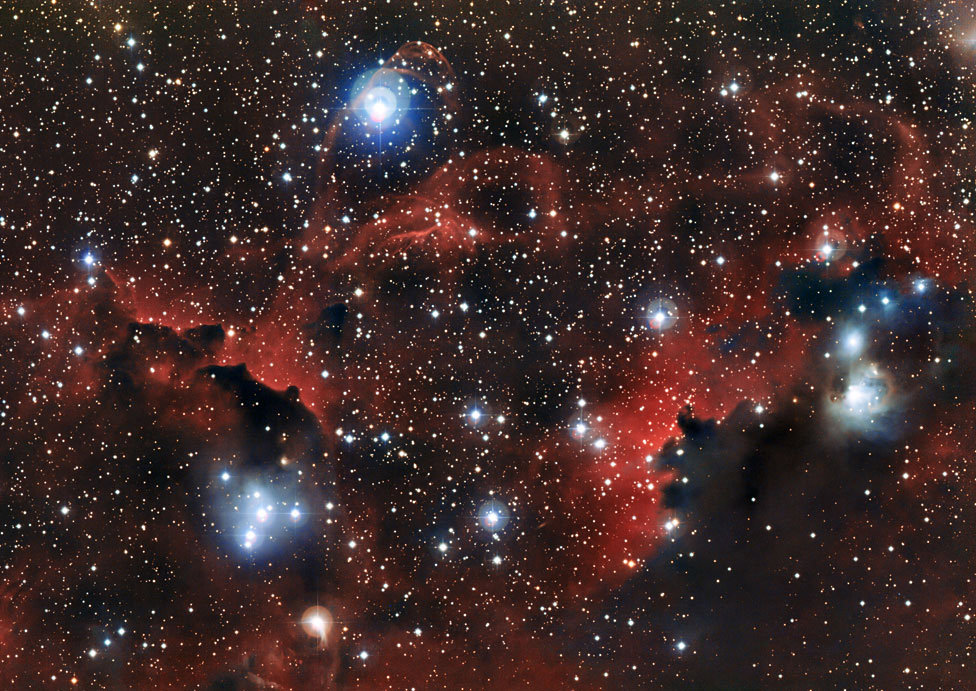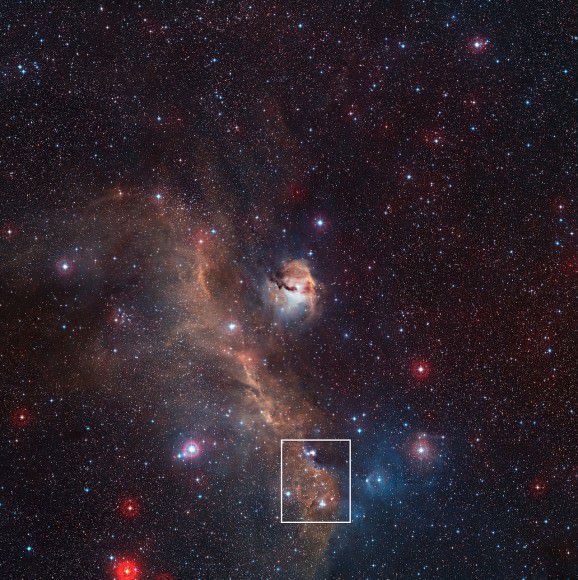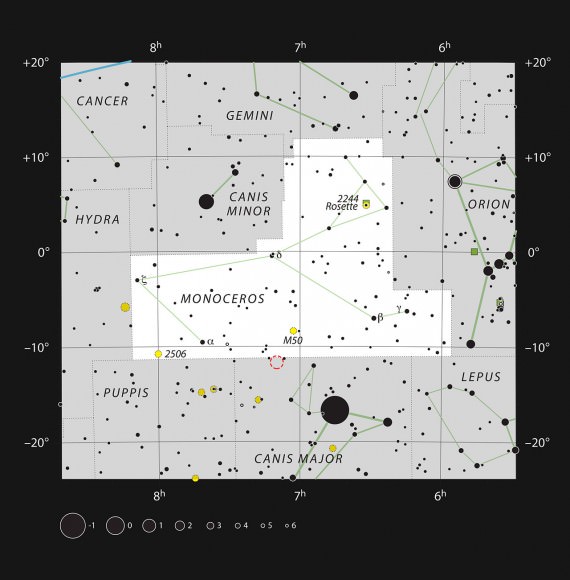Bright stars and vast clouds of dust and gas illuminate the “wings” of the Seagull Nebula (ESO)
These glowing red clouds are just a small part of the wings of an enormous bird — the Seagull Nebula, a band of gas and dust 3,400 light-years away that shines from UV light radiating from hot newborn stars.
This image was made from observations with the MPG/ESO 2.2-meter telescope at the ESO La Silla Observatory in Chile. See the full wide-field view of the Seagull Nebula below.
Wide-field view of the Seagull Nebula. The white box is the area seen at top. North is up in this view. (ESO/Digitized Sky Survey 2. Acknowledgement: Davide De Martin)
The Seagull Nebula (IC 2177) is a vaguely bird-shaped region of gas and dust clouds located between the constellations Canis Major and Monoceros. The detail image at the top of this article is located along the upper edge of the gull’s lower wing, and is separately cataloged as Sharpless 2-296.
The bright red glow is the result of ionized hydrogen energized by the radiation from the several hot, bright young stars seen in the image. H II regions like the Seagull Nebula are signs of ongoing star formation in a galaxy — in a spiral galaxy like our Milky Way, these dust clouds are scattered throughout the arms. In fact, it was observations of such nebulae in the 1950s by Stewart Sharpless that helped determine the spiral structure of the Galaxy.
The silhouettes of dark, dense clouds closer to Earth block the red hydrogen glow from more distant areas of Sharpless 2-296.
Read more on the ESO site here.
Location of the Seagull Nebula (ESO, IAU and Sky & Telescope)




I always appreciate it when the close-up view of something is shown in context of its greater surroundings, or backdrop. It places the object in spatial relation to its landscape, or wider perspective of its skyscape. In panning-out from the detailed view, dimension of scale is given to the focused scene. As the past imparts depth of color and meaning of time to the present, while painting strokes of framed-insight into the future.
From our Home Planet, that is all we see, beyond the Solar family: frames of recession into the past, as Space expansion accelerates to a future vast.
Yet, though I comprehend it not, the future is all around us.